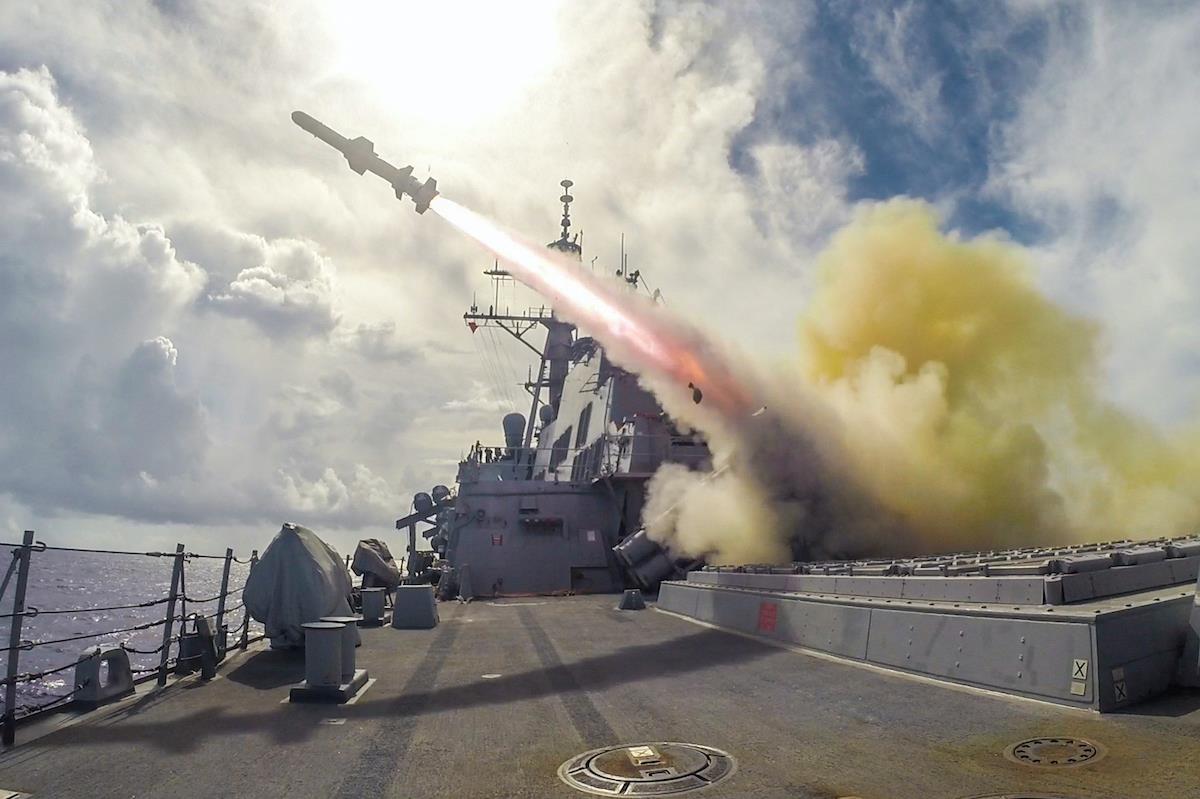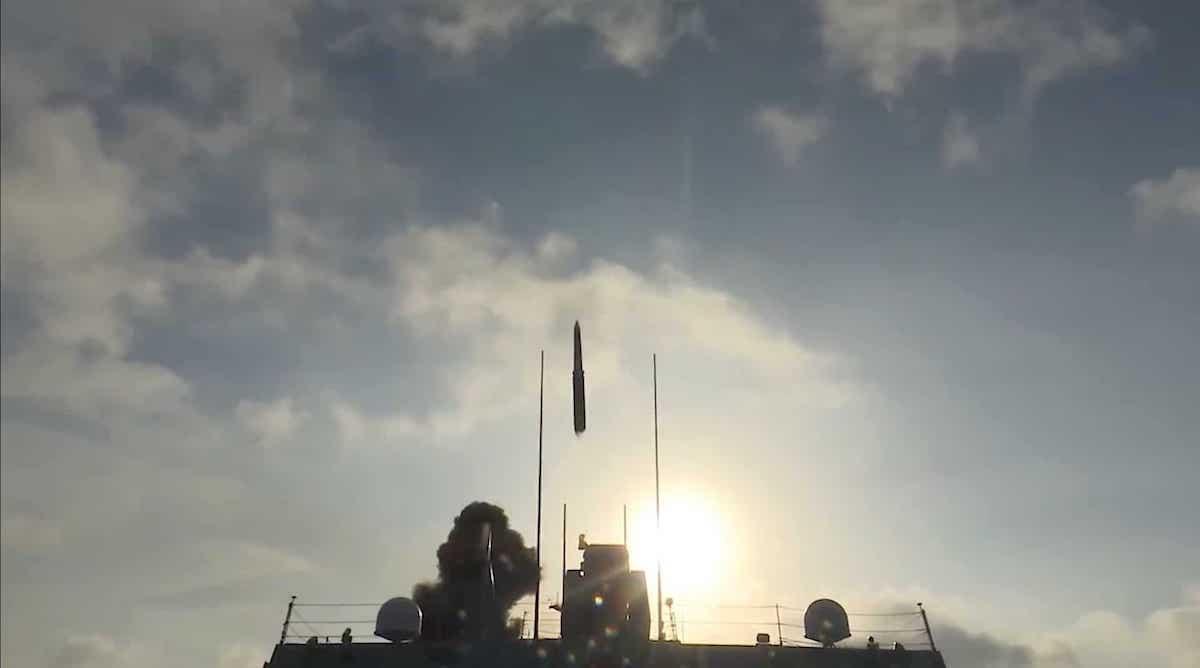(MENAFN- Asia Times) Guam's missile defenses are slated for a massive upgrade, hardening US military facilities housed on the strategic Pacific island against potential Chinese and North Korean attacks.
The Pentagon is taking the initial steps to provide Guam with a persistent missile defense system that gives 360-degree coverage against Chinese and North Korean missile threats, usni news reported .
The USNI report mentions that Guam will receive a version of the road-mobile AN/TPY-6 four-sided phased array radar for integrated air and missile defense, tied to a disaggregated Aegis Ashore on the periphery.
US Missile Defense Agency director Vice Admiral Jon Hill said before the Senate Armed Forces Committee that environmental assessments for additional missile defense sites are underway, the report said. The facilities will be designed to provide a layered defense against simultaneous cruise, ballistic, maneuvering and hypersonic attack, Hill said according to the same USNI report.
Joseph Trevithick notes in a july 2021 article for the warzone that it may be possible to build some portions of the Aegis Ashore system as an extension to the sprawling Anderson Air Force Base. Trevithick also mentions that building an underground facility at Guam's southern end is possible, with interceptor missiles being fired from apertures in the mountainsides.
The planned Aegis Ashore facility will complement other missile defense assets already positioned on Guam, including the Terminal High Altitude Air Defense (THAAD) and Aegis-equipped nearby warships.

The Arleigh Burke-class guided-missile destroyer USS Fitzgerald fires a Harpoon missile during a live-fire drill in the waters near Guam. Photo: AFP / US Navy
However, the multitude of systems may present challenges, analysts say.
chris gordon notes in a march 2023 article for air & space forces magazine that Guam faces a perfect air and missile defense problem, noting that integrating disjointed missile defense systems may not be effective against adversaries deploying an array of advanced weapons such as drones, cruise missiles, ballistic missiles and hypersonic weapons to exploit the gaps in Guam's defenses.
Harry Harris notes in a july 2021 article for breaking defense that Guam's missile defense is problematic since unlinked systems combined with fixed sensor-to-shooter combinations promise failure at first contact with an enemy armed with advanced missiles.
Furthermore, Harris notes that the sheer number of missiles fired in a saturation attack demands enormous sensor integration across various domains, including cyber and space, to defeat hypersonic threats.
He also says that Aegis Ashore has limited capabilities against low-flying cruise missiles, although an upgraded version has an advanced command and control system to bring other platforms into the fight.
China and North Korea field so-called“Guam killer” missiles such as the DF-26, China's first ballistic missile with a 4,000-kilometer range to hit Guam, and North Korea's Hwasong 14 and 15, both of which have a 4,500-kilometer range when fired at a normal trajectory.
Apart from targeting Guam with ballistic missiles, China may now be able to put Guam within hypersonic strike range of its naval and air forces.
the warzone reported last month that China's Shandong carrier battlegroup sailed within 600 to 700 kilometers of Guam, potentially threatening US forces with air and ship-launched hypersonic missile attacks.
Aside from threatening Guam, the Shandong battlegroup's deployment may have aimed to demonstrate China's ability to flank Taiwan from the south and cut off US forces deployed in the Philippines from resupply and reinforcement from Guam.
asia times reported in october 2022 that China may now be able to deploy hypersonic weapons on its carrier-based aircraft and now deploys the ship-based YJ-21 hypersonic missile aboard its Type 055 cruisers. The weapons can threaten US forces stationed in Guam and Aegis-armed warships operating in the island's surrounding waters.
asia times reported in november 2022 that China has also fielded the CM-401 air-launched hypersonic missile, which is designed to be fired from H6-K strategic bombers.
China has made a not-so-subtle threat against US forces in Guam, releasing a video in September 2020 showing an H6-K bomber launching a missile at an enemy base modeled on Guam's Anderson Air Base.

China's YJ-21 hypersonic missile in a test launch. Image: Video Screengrab
Given those threats, the US is taking steps to shore up Guam's defenses aside from the Aegis Ashore facility plan. asia times noted in august 2022 that the US has started the integration of Guam's disjointed missile defenses consisting of the US Army Terminal High Altitude Air Defense (THAAD) missile batteries and US Navy's Aegis-equipped warships into a common Joint Track Management Capabilities bridge.
While additional Aegis warships such as the Ticonderoga cruisers can be diverted to reinforce Guam's defenses, it could be a strategic stretch as they are also needed for anti-submarine missions or carrier escorts.
Moreover, the technology aboard those aging warships may be behind the times when faced with China's and North Korea's latest missile and hypersonic threats. They can still serve as ad-hoc missile defense command centers and floating testbeds for new missile defense systems.
Positioning missile defense radars is difficult in Guam. The island's small size and the size and power of such radars pose an explosive hazard risk, given the possibility of electric discharge next to ordnance stored nearby. The powerful radars may also generate signal emissions that could interfere with civilian aviation.
Guam's high strategic value is such that all US operations in the Pacific are premised on the island's bases. A B Abrams notes in an august 2022 article for the diplomat that while Guam was considered near-unassailable during the Cold War, improvements in Chinese and North Korean missile capabilities may have changed Guam's invincible status as a haven for US forces in the Pacific.
Abrams notes that while effective defense against hypersonic threats may still be some time away, near-term improvements to air and missile defense technology can improve Guam's chances against the conventional missiles that make up the bulk of China and North Korea's arsenals.
Parallel with toughening Guam's missile defenses, Abrams also says that the US must reduce its extreme reliance on Guam by dispersing its assets more widely in the Pacific.
Like this:Like Loading...